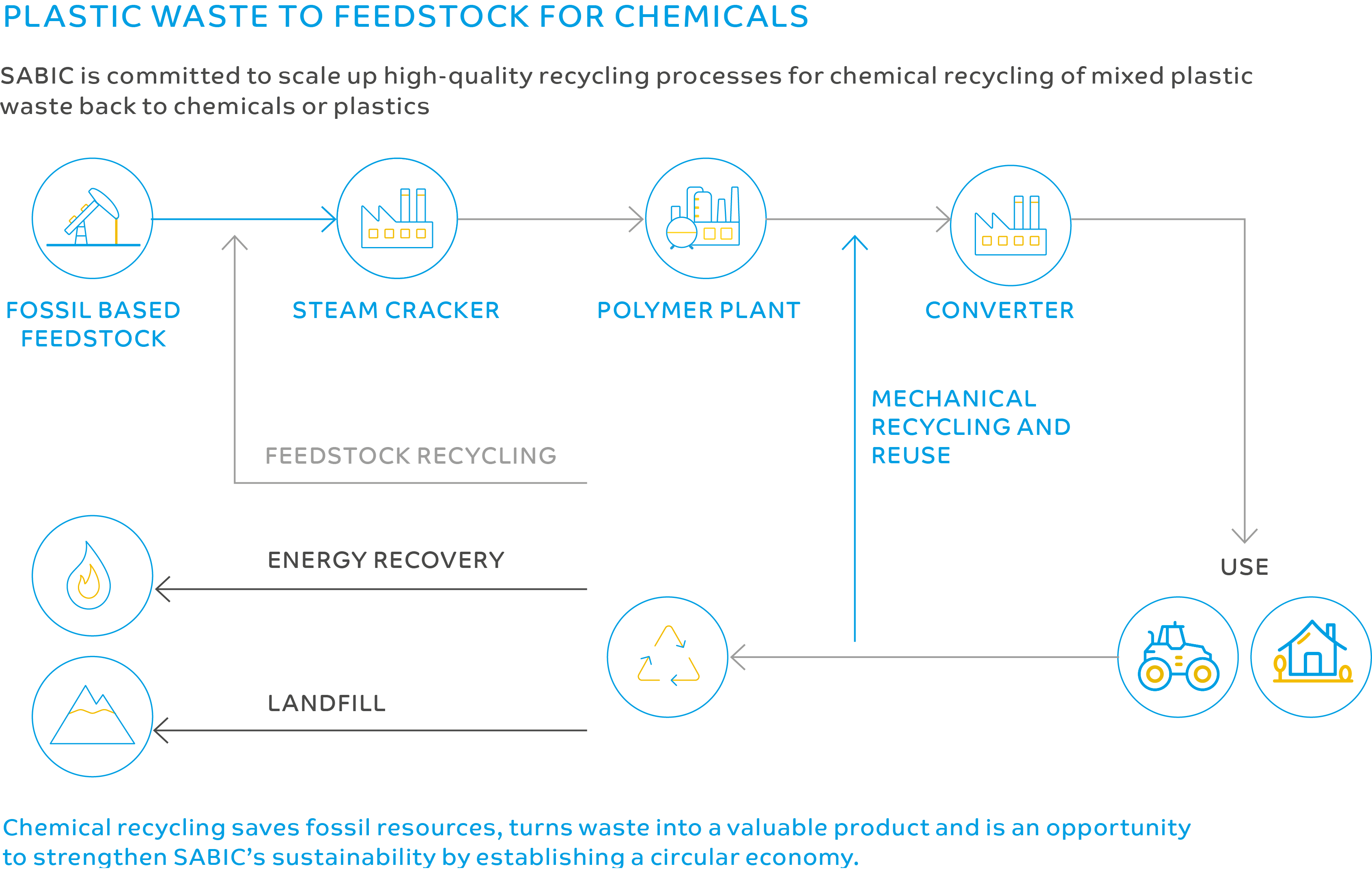Strategy
SABIC’s ambition is to be the preferred world leader in chemicals, and sustainability is a foundational element of the strategy to achieve that goal.
Sustainability helps us to understand and adapt to long-term trends and expectations in society, impacting our financial performance by the introduction of efficiencies that reduce operating costs and innovative sustainability product solutions that help to grow the bottom line. SABIC’s sustainability strategy is executed through a target-oriented approach, and supported by a comprehensive internal-governance structure.
It is critical to have strong collaboration with internal and external stakeholders, including our customers, in order to understand their evolving needs, and translate their challenges into opportunities.
Since 2009, our sustainability program has helped us to consistently improve our operational performance, to identify challenges that are becoming more transformational, and to foster a collaborative approach that is necessary to accelerate positive change.
To maximize value, our efforts and reporting focus strongly on the top five materiality topics. Over time, changing global markets and mega-trends in the wider society can require updates to our material priorities.
Our materiality process, which determines strategic priorities, was refreshed in 2018, resulting in six core priorities and nine new areas to drive business progress. Focusing on these areas will help us to drive performance and transform our company to thrive in tomorrow’s world.
As a company that manufactures materials, our strategy includes a desire to keep carbon within the materials value chain, and we are taking leading action on chemical recycling, an important circular economy opportunity. In addition, building on our “solution space” of products, many of which lead to carbon-emission savings throughout their life cycles, will help to enable a sustainable world while satisfying customers and increasing profitability.
Climate change action impacts our process operations, with a focus on carbon dioxide emissions, energy intensity, and renewable energy. The continued drive towards resource efficiency and health and safety will decrease costs in our operations. And governance and integrity will create maximum long-term value for stakeholders.
SABIC has embraced the United Nations’ Sustainable Development Goals (SDGs), and assessed those which we can impact the most, linking these goals to our company-wide sustainability approach.
To meet stakeholder needs, we have designed our sustainability efforts to identify opportunities, reduce risks, and improve resilience to a changing business climate – with the overall result of inspiring our company’s transformation.

